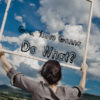The Power of Creating a Personal Reading Plan

I have never found a high impact leader of influence who was not a reader. Involvement for over forty years with business, church and organizational leaders has validated this as more than just a maxim.
My friend Dr. Jay Strack often says
You will be the same person five years from now except for the places you go, the people you meet and the books you read.
According to the book Making Disciples of Oral Learners:
- 58% of the U.S. adult population never read another book after high school.
- 42% of U.S. university graduates never read another book.
- Adults in the U.S. spend four hours per day watching TV, three hours listening to the radio and 14 minutes reading magazines.
Turning your good intentions, unfinished or unstarted books into an action plan can become a reality. Let me suggest a basic plan for developing the personal practice of reading as a habit.
Make your reading plan personal:
- Map out your month, quarter or year as to what types of books you want to read.
- Never be without a book, eReader or audio book so you can redeem those little spaces of time that come during your day.
- Simply commit to reading a minimum of seven pages a day, every day. This does not sound like a lot, but you will be surprised how many books you can read by using this approach.
Formulate your plan based on your field of interest:
A suggested plan for focused reading on youth and leadership (Note: I gave the following plan to a group of Youth Ministry Leadership Consultants.):
- 0-6: spiritual growth (If you are in ministry and are only planning to read 0-6 books, I suggest they all be focused on spiritual growth.)
- 7-12: add leadership and youth ministry (Once you move into the 7-12 range of books, you can add these topics.)
- 12+: add general interest (culture, history, sports, and new areas of interest to challenge your mind)
- I suggest 80% books and 20% other reading sources.
Some suggested sources of reading (non-book/current event/time sensitive):
- Book summaries
- Articles of interest
- Blogs/websites
- White papers
- Social media (Twitter, etc.)
Capture what you read:
I underline and make notes in my books and Kindle. After I complete a book, I put the information from the book into some digital format that can be retrieved. Determine which format or program works best for you and then capture the information.
If you have illustration/quote software you use that has really been helpful, I would like to hear about it. If you have some best practices for capturing the information you read, let me hear them.




Great stuff here. I’m an oral learner so I love my audible.com subscription.
I agree with you Brandon, it is an integral aspect in my yearly reading plan. If I really like a book I often read it in hard copy and then listen to it because I get new insights.
Great article Mike! I have recently been challenged to read more. I started keeping track of what I read on a spreadsheet so that I can remember what I have read and what I want to read. I am interested, what books you would recommend that every youth leader should read?
Seth, sorry for the delayed response…I have been hiking here in the Adirondacks. I have compiled a list of a few key youth books I would recommend. If you would be so kind as to subscribe to the blog then I will email that list to you.
7 pages a day…challenge accepted!
What quote/illustration program do you use? I have often wondered, “what do I do with all these highlights and notes in the margins?”
Chad, I am excited that you accepted the reading challenge, get ready to grow and expand your world. As far as the program I use for quotes and illustrations, I am in the process of changing right now. I am moving all of my data into Evernote. If you use Evernote this would be a great place for you to begin as it allows you to tag.